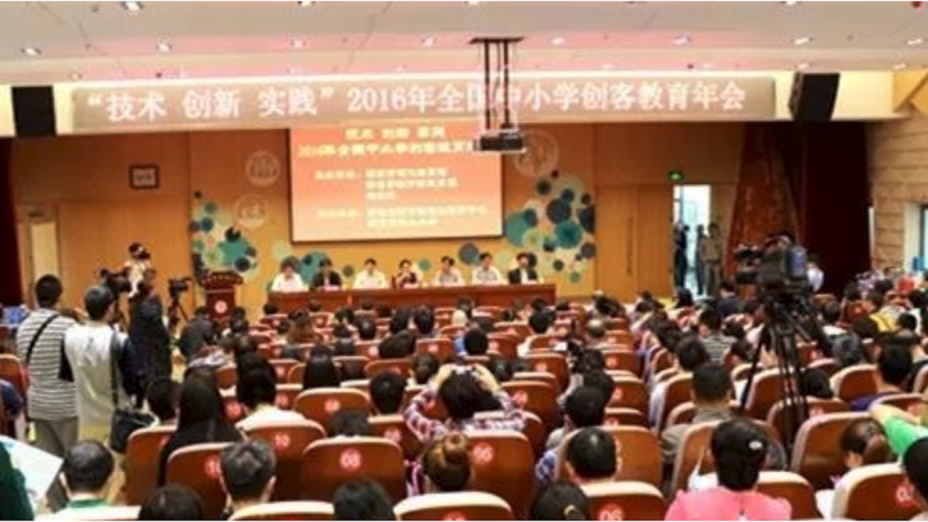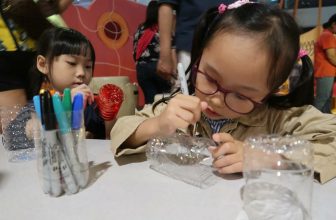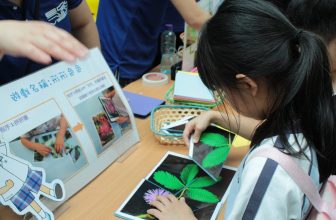
Initial development model
When I started writing the STEM+ Education Preliminary Series, it was mentioned that there are some alienations and deviations in schools and outside schools in Hong Kong and the Mainland to promote the development of STEM education. That’s why I explored the subject of “STEM+” and shared my personal opinions and suggestions. Relatively speaking, the development of STEM education has its own advantages and problems to be faced in the two places. The same thing is that STEMs in the two places have a “wonderful” scenario, and they have been transplanted overseas for many years.
In essence, STEM education is a kind of interdisciplinary curriculum design, and it can also be regarded as a learning and teaching strategy for project learning (commonly known as “project learning” in the Mainland) that advocates collaborative learning and comprehensive ability building. Both of these focuses are included in the development framework of Hong Kong’s Millennium Curriculum Reform. Therefore, when the local academic community promoted STEM education in the United States, it did not pay special attention in the initial stage. There is no mention of it either. There are rumors that the former chief executive of Hong Kong began to pay attention to STEM education in the 2015 policy address because the former Secretary of Education went to the Mainland for a meeting in the middle of the same year. Inspired by the exchanges of relevant departments, he returned to Hong Kong to study and judge before it became a special development education task. However, the current development of the two places is closely linked in all aspects. Knowing more about the development of STEM education in mainland China is also beneficial to educational exchanges and mutual promotion between the two places.
The previous series of manuscripts also mentioned that from the historical background of teacher training in the Mainland, as well as the education reforms in the past ten years, the original lack of STEM education emphasizes interdisciplinary curriculum design and promotes collaborative “project learning” strategy advantages, why the whole country , Will promote STEM education more actively than Hong Kong? Of course, there are many considerations for national development strategies. One reason is, of course, the global climate change. Chinese education is a bit behind the advanced countries in the world, especially the comprehensive performance of its citizens. Therefore, in the second review of curriculum reform in 2015, the new education goal of “student development core literacy” was proposed. Its meaning is equivalent to the “nine generic skills” of Hong Kong’s curriculum reform, or the ten basic skills of Taiwan’s curriculum reform. “Core literacy” includes three aspects: cultural foundation, independent development, and social participation; involving six literacy: humanistic background, scientific spirit, learning to learn, healthy living, responsibility, and practical innovation; as well as those that are specifically identified by the country. A basic point.
Force education innovation
“Core literacy” is a new requirement. Mainland schools and teachers may not be easy to grasp and gradually build in the learning process. Therefore, some scholars believe that the government wants to push and accelerate the transformation of school education by promoting STEM education, and focus on interdisciplinary curriculum design. , And enhance students’ comprehensive learning ability. So in fact, many off-campus educational institutions have begun to introduce many STEM-element learning courses abroad as early as 2012, but they have not seen any improvement. It was not until the past 14 or 15 years that they suddenly became popular. The core driving factor is the government orientation of education. Mainland educator Zhong Binglin is talking about: “What is the significance of my country’s development of science and innovation education? “Mentioned that the first is to change teaching methods. The second is to focus on the learning process. The third is to reform the evaluation method. In terms of how to explore, suggestions are as follows: First, change the role of teachers and reform traditional teaching methods. The second is to deepen teaching reform and promote the construction of teaching resources. The third is to balance the relationship between STEAM education and daily learning. The fourth is to establish an interactive coordination mechanism. In 2016, the Ministry of Education of the Mainland not only proposed STEM+-related learning content in the newly launched elementary science syllabus in 2016, but also formulated competency standards in 17 years. Various provinces and cities have also allocated a large amount of special funds to allow schools to outsource themselves according to the bidding process. Service required.
The mainland STEM education expert and Director Wang Su of the STEM Education Research Center of the Chinese Academy of Educational Sciences mentioned in the article “2017 White Paper on STEM Education in China” that the current situation of STEM education in China can be divided into three levels:
1. “Creating a new situation” means that the practice of STEM education in China is emerging;
2. “Supporting new development” refers to the gradual prosperity of STEM education research in China;
3. “Clear new positioning” means that STEM education is incorporated into the national strategic development policy.
STEM education in China does not start from scratch, but the name and connotation differ in different periods. In 2015, the Ministry of Education first proposed to “explore new education models such as STEAM education and maker education” in the “Guiding Opinions on Comprehensively and Deeply Promoting Educational Informationization During the 13th Five-Year Plan Period (Draft for Solicitation of Comments)”. In 2016, the Ministry of Education further requested in the “Thirteenth Five-Year Plan for Informatization of Education”: “Regions with conditions should actively explore the use of information technology in the “crowd creation space”, interdisciplinary learning (STEAM education), maker education, etc. The application in the education model focuses on improving students’ information literacy, innovation awareness and innovation ability, forming digital learning habits, promoting students’ all-round development, and giving play to the supporting and leading role of information technology in cultivating high-quality talents for the future.” The State Council released in 2016. The “Implementation Plan of the National Science Literacy Action Plan (2016-2020)” proposed that in the compulsory education stage, based on the core literacy framework of student development, improve the science curriculum system in primary and secondary schools, research and propose scientific literacy in primary and secondary schools, and update the science and technology of primary and secondary schools. Education content, strengthen the guidance of inquiry learning; in the high school stage, it is necessary to encourage the exploration and development of interdisciplinary inquiry activities of scientific innovation and technical practice, and at the same time standardize the comprehensive quality evaluation mechanism of students, and promote the development of students’ innovative spirit and practical ability. On February 15, 2017, the Ministry of Education issued the “Compulsory Education Primary School Science Curriculum Standards”, in which the emphasis on science STEAM education and its future development have more elaboration and planning. The Chinese version of STEM+ is officially defined. Emphasis on the three characteristics of interdisciplinary, project-based learning, and problem-solving will be different from the foreign emphasis on science and engineering, and single subject teaching, which is also called STEM. It advocates moving from science education to STEM+ education.
Current situation and way out
On March 1, 2017, a research team jointly established by Beijing Normal University, Beijing Guoxin Shijiao Information Technology Research Institute, and Education Management Information Center of the Ministry of Education released the “China STEAM Education Development Report”. In the text, you can understand the development status of China’s STEAM education in schools:
- The STEAM courses in most schools appear in the form of club courses and elective courses (accounting for 72%);
- Conduct 1 STEAM course every week;
- Courses and teaching that can enter the normal state mainly appear in the form of innovative school-based courses;
- In China, the exploration of STEAM education does not start from mathematics and science courses, but mostly from information technology courses;
- The popularity is not high, and it is limited to a small number of maker education and informal education.
Specific to the current exploration of STEAM education in primary and secondary schools, what are the problems? The report mentions:
- The curriculum development and implementation are difficult;
- Lack of teachers and high requirements for teachers;
- It is difficult to create a learning space.
There are indeed many weak links in STEM education in China. After an exchange, a British expert suggested an eight-step improvement plan:
- To identify the problem;
- Recognize the limitations of the design;
- Brainstorm and come up with solutions;
- Complete the entire design concept;
- Explore different methods;
- Lock the final design ideas and methods;
- Modeling;
- Continuously improve this design.
In 2017, the STEM Education Research Center of the Chinese Academy of Educational Sciences established China in Beijing and announced the “STEM Education 2029 Action Plan”. The plan is a vision of STEM education in the next ten years proposed by experts and scholars in view of China’s national conditions. It has a clear direction for the popularization of STEM education, and will also provide specific examples to illustrate the current challenges of STEM education. Key topics include:
- Promote the top-level design of STEM education
- Implement STEM talent training smooth plan
- Building a platform for resource integration and teacher training
- Build corresponding standards and evaluation systems for STEM education
- Create an integrated STEM innovation ecosystem
- Create a strategic highland of education and talents for the service economy
- Promote the successful model of STEM education
Just as Director Wang Su clearly pointed out in the “Interpretation” that STEM education has been incorporated into the national strategic development policy. We will only see greater intensity and larger-scale development in the future.
Author: Lin Guiguang Date: 2019-01-19
Reference source: www.master-insight.com



![[Singapore] How STEM education can make your child future-ready](https://www.screen.com.hk/en/wp-content/uploads/sites/2/2021/08/girl-doing-science-experiment-lead-1-336x220.jpg)

